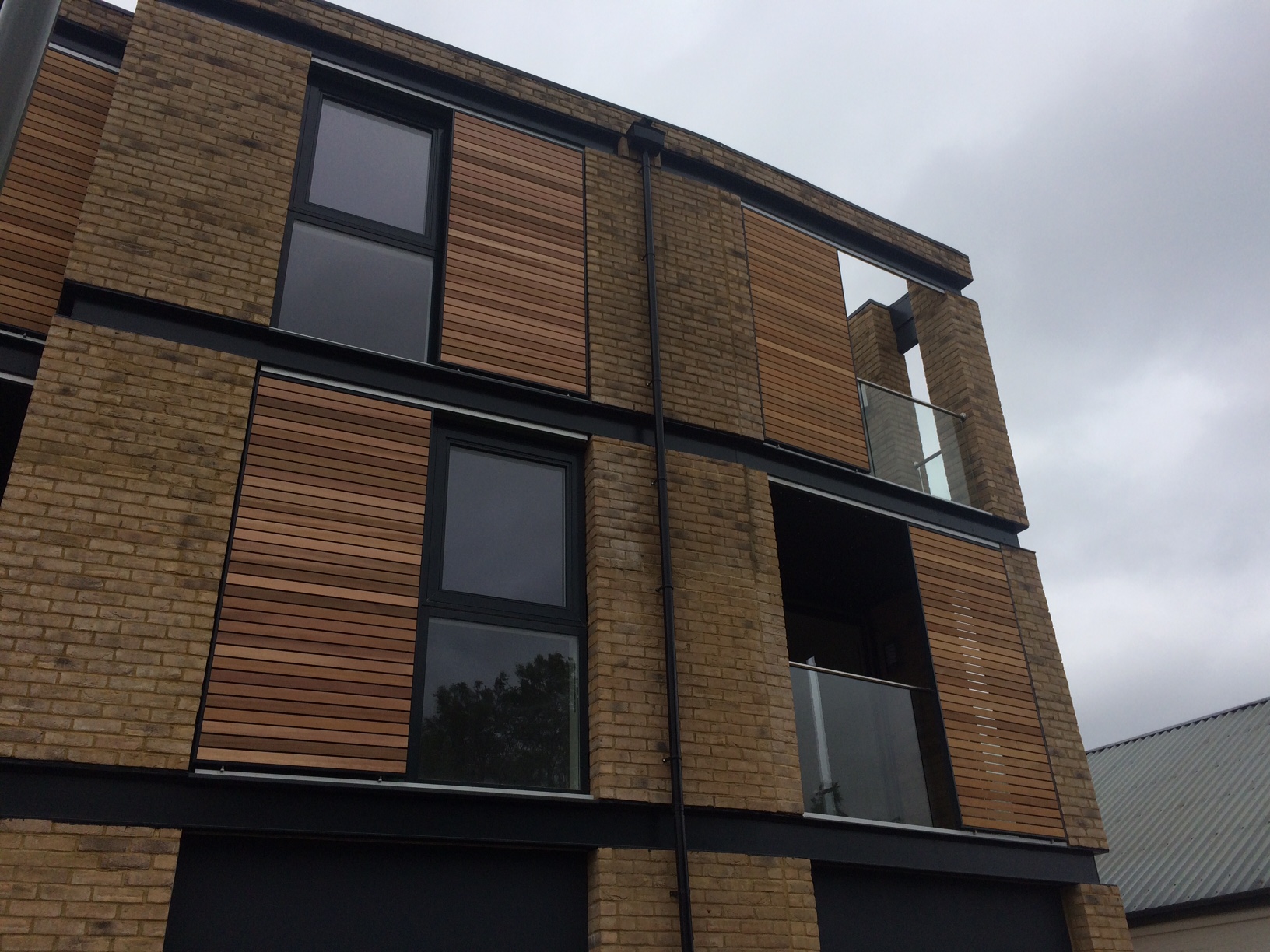Exterior shutters

Exterior shading systems have often been overlooked because of the initial higher cost, the aesthetic appearance may not fit well with older design principles, or unfamiliarity by the architects and designers with alternative solutions. However, if function were the leading criterion for making the decision about how to control the harmful effects of the sun, exterior shading systems might be more common.
The advantage of an exterior shutters or screens is that they reflect and absorbs solar energy outside the house… before it hits the windows. They can absorb, reflect and re-emit up to 95% of the total solar radiance while only 5% is admitted into the interior space. To help operate exterior shutters or screens, fully-motorised sliding and folding track solutions are available, as well as motorised louvre solutions, all fully-programmable.
The benefit of motorised solutions is that the user can control the entry of heat and light at the touch of a button, especially practical for exterior solutions where weather conditions may be poor, or for fixed glass installations where access might be an issue. Additionally, it is possible to programme shutters/louvres to open at pre-determined times of the day – a benefit for both heat/light control and security.
It is possible to design bespoke screens/shutters that will allow maximum heat gain in the winter months and reduce internal temperatures during the summer months. Some structures with large expanses of glass have reported lowering air conditioning cost by over 50%.
--GSSLTD
[edit] Related articles
- BREEAM Visual comfort Glare control.
- Brise soleil.
- Control of solar shading IP 4 17.
- Daylight lighting systems.
- Glare.
- Retrofitting solar shading.
- Shutter.
- Solar gain.
- Solar shading.
- Solar shading of buildings BR 364.
- Solar thermal panels.
- The daylight factor.
- Thermal comfort.
- Urban heat island effect.
- Wind Resistance for External Blinds.
Featured articles and news
Professional practical experience for Architects in training
The long process to transform the nature of education and professional practical experience in the Architecture profession following recent reports.
A people-first approach to retrofit
Moving away from the destructive paradigm of fabric-first.
International Electrician Day, 10 June 2025
Celebrating the role of electrical engineers from André-Marie Amperè, today and for the future.
New guide for clients launched at Houses of Parliament
'There has never been a more important time for clients to step up and ...ask the right questions'
The impact of recycled slate tiles
Innovation across the decades.
EPC changes for existing buildings
Changes and their context as the new RdSAP methodology comes into use from 15 June.
Skills England publishes Sector skills needs assessments
Priority areas relating to the built environment highlighted and described in brief.
BSRIA HVAC Market Watch - May 2025 Edition
Heat Pump Market Outlook: Policy, Performance & Refrigerant Trends for 2025–2028.
Committing to EDI in construction with CIOB
Built Environment professional bodies deepen commitment to EDI with two new signatories: CIAT and CICES.
Government Grenfell progress report at a glance
Line by line recomendation overview, with links to more details.
An engaging and lively review of his professional life.
Sustainable heating for listed buildings
A problem that needs to be approached intelligently.
50th Golden anniversary ECA Edmundson apprentice award
Deadline for entries has been extended to Friday 27 June, so don't miss out!
CIAT at the London Festival of Architecture
Designing for Everyone: Breaking Barriers in Inclusive Architecture.
Mixed reactions to apprenticeship and skills reform 2025
A 'welcome shift' for some and a 'backwards step' for others.





















